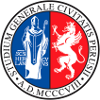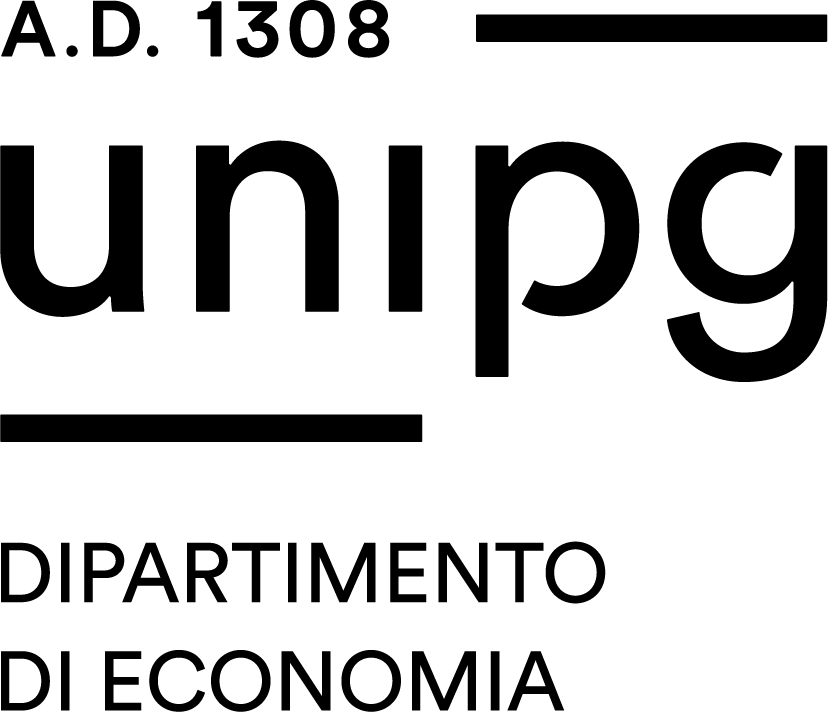Study-unit MACROECONOMICS
| Course name | Business administration |
|---|---|
| Study-unit Code | 20003909 |
| Location | PERUGIA |
| Curriculum | Comune a tutti i curricula |
| Lecturer | Mauro Visaggio |
| CFU | 9 |
| Course Regulation | Coorte 2023 |
| Supplied | 2024/25 |
| Supplied other course regulation | |
| Learning activities | Caratterizzante |
| Area | Economico |
| Sector | SECS-P/01 |
| Type of study-unit | Obbligatorio (Required) |
| Type of learning activities | Attività formativa monodisciplinare |
| Partition |
MACROECONOMICS - Cognomi A-L
| Code | 20003909 |
|---|---|
| Location | PERUGIA |
| CFU | 9 |
| Lecturer | Mauro Visaggio |
| Lecturers |
|
| Hours |
|
| Learning activities | Caratterizzante |
| Area | Economico |
| Sector | SECS-P/01 |
| Type of study-unit | Obbligatorio (Required) |
| Language of instruction | The course presents the fundamental theoretical concepts and examines some case studies in which these concepts are applied to real historical cases. |
| Contents | The course presents the following topics. Classic model; income-expenditure model; IS-IT model; basics of open economy; open economy under flexible exchange rate regime: open economy under fixed exchange rate regime; the Great Depression; the Great Inflation; the Great Recession: the Great Uncertainty; currency crisis in Italy in 1992; tax adjustments in Italy in the 1990s; the evolution of public debt in Italy. |
| Reference texts | A. Mauro Visaggio, 2023, Macroeconomia. Teoria e politica macroeconomica in una economia globale integrata, seconda edizione, McGraw-Hill editore, Milano. B. Mauro Visaggio, 2024, Le Grandi Fasi economiche tra cigni neri e cigni grigi, McGraw-Hill editore, Milano. |
| Educational objectives | The course aims to develop the tools and topics addressed during a basic Macroeconomics course with applications to historical cases |
| Prerequisites | Knowledge of basic concepts of microeconomics and mathematical analysis. |
| Teaching methods | Lectures and exercises |
| Other information | The supervision of the thesis is subject to passing the exam. There is no restriction on the mark obtained in the exam. |
| Learning verification modality | Written exam: ten multiple-choice questions (maximum 2 points each); one open-ended question (maximum 10 points)." |
| Extended program | PART ONE. Theoretical models Classical paradigm: the Panglossian vision of the economic system. Classic benchmark, macroeconomic policies: the destabilization of the economic system. [Educational material: (A) chapter 2]. Keynesian paradigm: the pessimistic vision of the economic system. Income-expenditure model. Macroeconomic policies for stabilizing the economic system. [Educational material: (A) chapter 3]. IS-IT model: short term. IS-IT model. Macroeconomic policies in the presence of high public debt. [Educational material: (A) chapter 4]. IS-IT-AS model: medium-long term. IS-IT-AS model: short-run temporary equilibrium. IS-IT-AS model: medium-long term equilibrium. [Educational material: (A) chapter 5]. Balance of payments and foreign exchange market. Balance of payments. International monetary system. Foreign exchange market equilibrium under flexible and fixed exchange rate regimes. [Educational material: (A) chapter 6]. IS-IT model in open economy: flexible exchange rate regime. Open IS-IT model: perfect capital mobility and flexible exchange rate regime. Macroeconomic stabilization policies. [Educational material: (A) chapter 7]. IS-IT model in open economy: fixed exchange rate regime. IS-IT model in open economy: fixed exchange rate regime. Optimal monetary areas [Educational material: (A) chapter 8] SECOND PART. Study cases Case Study 1. The Great Depression. [Educational material: (B) chapter 1] Case study 2. The Great Inflation. [Educational material: (B) chapter 3] Case Study 3. The Great Recession. [Educational material: (B) chapter 5] Case study 4. The Great Global Uncertainty: the permacrises of 2020-2024. [Educational material: (B) chapter 6] Case study 5. 1992 Italian currency crisis. [Educational material: (B) chapter 8] Case study 6. Fiscal adjustments in Italy in the 1990s. [Educational material: (B) chapter 9] Case study 7. Evolution of public debt in Italy in the period 1960-2021. [Educational material: (B) chapter 10. |
MACROECONOMICS - Cognomi M-Z
| Code | 20003909 |
|---|---|
| Location | PERUGIA |
| CFU | 9 |
| Lecturer | Mauro Visaggio |
| Lecturers |
|
| Hours |
|
| Learning activities | Caratterizzante |
| Area | Economico |
| Sector | SECS-P/01 |
| Type of study-unit | Obbligatorio (Required) |
| Language of instruction | The course presents the fundamental theoretical concepts and examines some case studies in which these concepts are applied to real historical cases. |
| Contents | The course presents the following topics. Classic model; income-expenditure model; IS-IT model; basics of open economy; open economy under flexible exchange rate regime: open economy under fixed exchange rate regime; the Great Depression; the Great Inflation; the Great Recession: the Great Uncertainty; currency crisis in Italy in 1992; tax adjustments in Italy in the 1990s; the evolution of public debt in Italy. |
| Reference texts | A. Mauro Visaggio, 2023, Macroeconomia. Teoria e politica macroeconomica in una economia globale integrata, seconda edizione, McGraw-Hill editore, Milano. B. Mauro Visaggio, 2024, Le Grandi Fasi economiche tra cigni neri e cigni grigi, McGraw-Hill editore, Milano. |
| Educational objectives | The course aims to develop the tools and topics addressed during a basic Macroeconomics course with applications to historical cases |
| Prerequisites | Knowledge of basic concepts of microeconomics and mathematical analysis. |
| Teaching methods | Lectures and exercises |
| Other information | The supervision of the thesis is subject to passing the exam. There is no restriction on the mark obtained in the exam. |
| Learning verification modality | Written exam: ten multiple-choice questions (maximum 2 points each); one open-ended question (maximum 10 points)." |
| Extended program | PART ONE. Theoretical models Classical paradigm: the Panglossian vision of the economic system. Classic benchmark, macroeconomic policies: the destabilization of the economic system. [Educational material: (A) chapter 2]. Keynesian paradigm: the pessimistic vision of the economic system. Income-expenditure model. Macroeconomic policies for stabilizing the economic system. [Educational material: (A) chapter 3]. IS-IT model: short term. IS-IT model. Macroeconomic policies in the presence of high public debt. [Educational material: (A) chapter 4]. IS-IT-AS model: medium-long term. IS-IT-AS model: short-run temporary equilibrium. IS-IT-AS model: medium-long term equilibrium. [Educational material: (A) chapter 5]. Balance of payments and foreign exchange market. Balance of payments. International monetary system. Foreign exchange market equilibrium under flexible and fixed exchange rate regimes. [Educational material: (A) chapter 6]. IS-IT model in open economy: flexible exchange rate regime. Open IS-IT model: perfect capital mobility and flexible exchange rate regime. Macroeconomic stabilization policies. [Educational material: (A) chapter 7]. IS-IT model in open economy: fixed exchange rate regime. IS-IT model in open economy: fixed exchange rate regime. Optimal monetary areas [Educational material: (A) chapter 8] SECOND PART. Study cases Case Study 1. The Great Depression. [Educational material: (B) chapter 1] Case study 2. The Great Inflation. [Educational material: (B) chapter 3] Case Study 3. The Great Recession. [Educational material: (B) chapter 5] Case study 4. The Great Global Uncertainty: the permacrises of 2020-2024. [Educational material: (B) chapter 6] Case study 5. 1992 Italian currency crisis. [Educational material: (B) chapter 8] Case study 6. Fiscal adjustments in Italy in the 1990s. [Educational material: (B) chapter 9] Case study 7. Evolution of public debt in Italy in the period 1960-2021. [Educational material: (B) chapter 10. |


